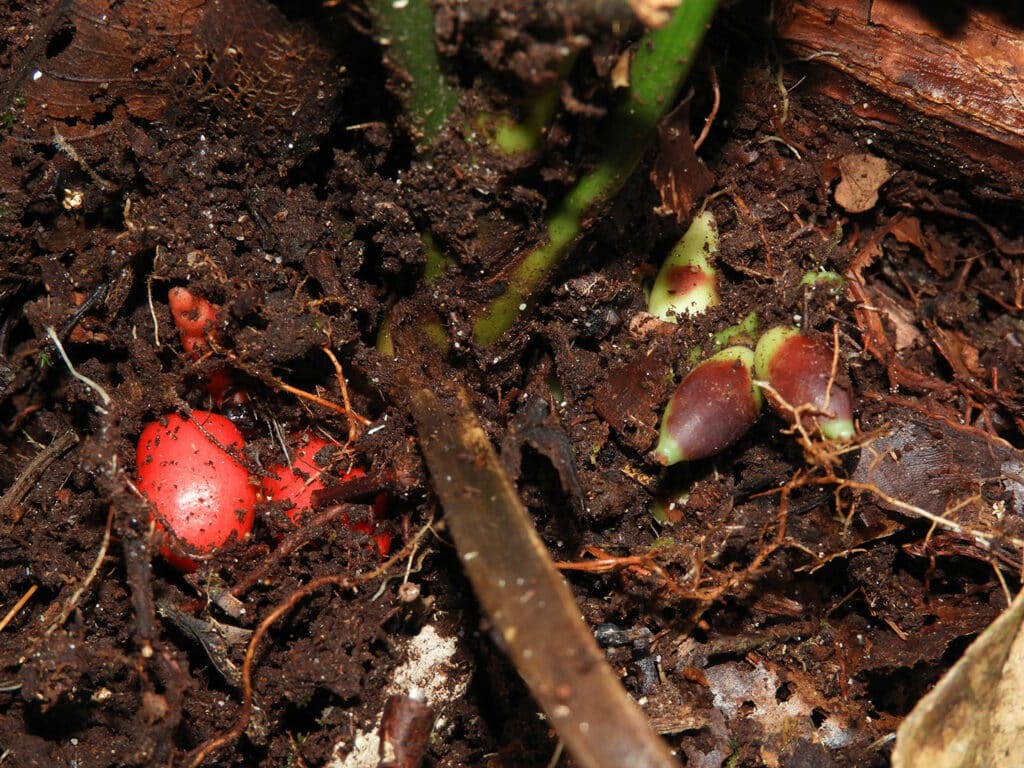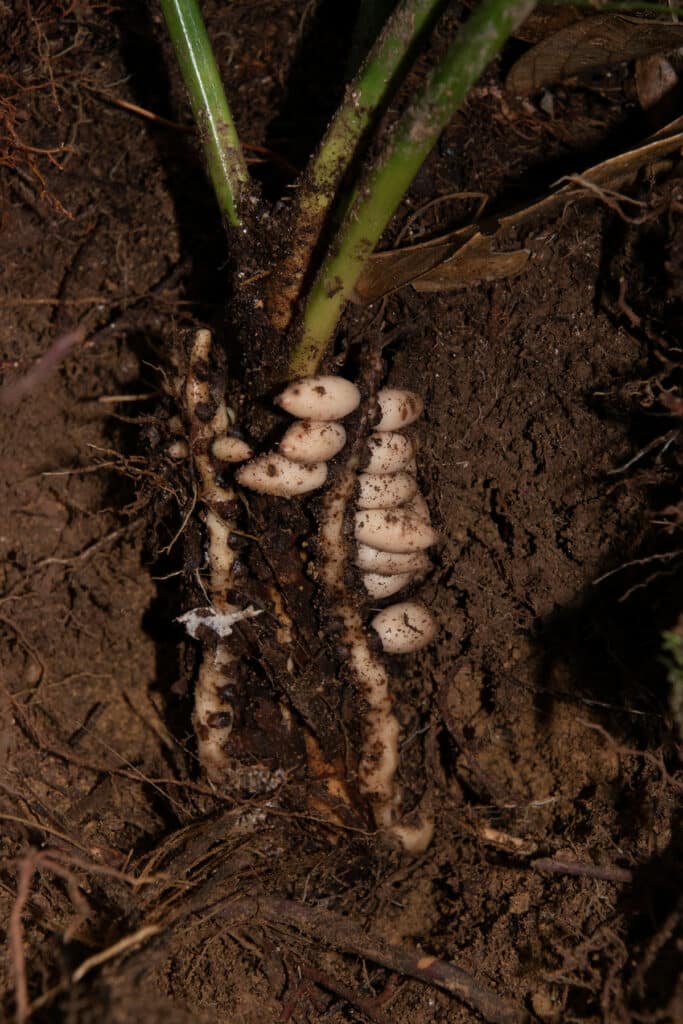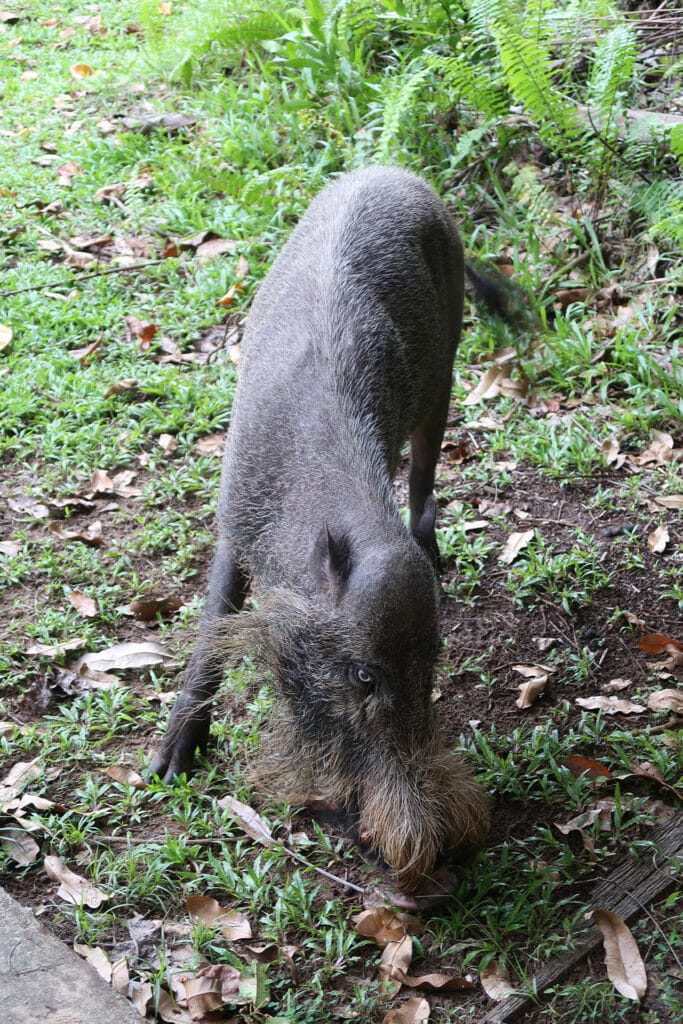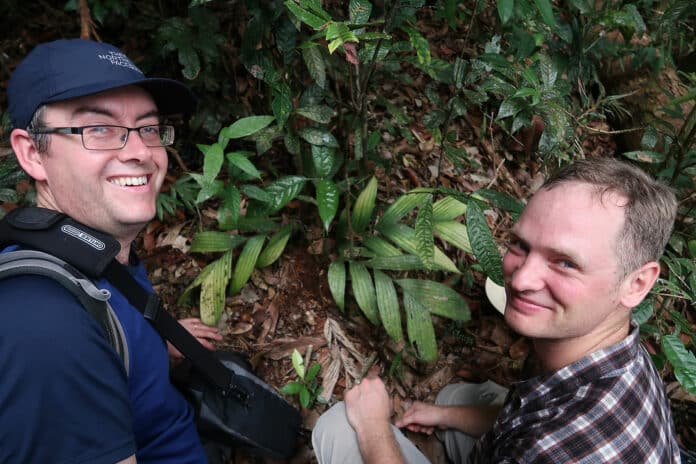In a new study, researchers at the Royal Botanic Gardens, Kew and partners have described the only known member of the palm family (Arecaceae) to flower and fruit almost entirely underground. Owing to this unusual characteristic, the scientists have named the species Pinanga subterranea, with its species name derived from the Latin word for ’underground‘. The work was published in the journal PALMS – the Journal of the International Palm Society, with added commentary in Plants, People, Planet.
Native to the tropical island of Borneo in Southeast Asia, the plant is well-known to locals who like to snack on its bright-red fruit – a sweet and juicy delicacy consumed in some parts of the island. However, until now, the plant has remained unnoticed by scientists who, to date, have described around 300 different species of palm on the island. Pinanga subterranea joins more than 2,500 species of palm known to science, up to half of which may be threatened with extinction.

According to the international team of researchers, P. subterranea can be found scattered across the primary rainforests of western Borneo, crossing state lines from Sarawak in Malaysia to Kalimantan in Indonesia. Prior to its scientific description, the plant was known in at least three Bornean languages under the names of: Pinang Tanah, Pinang Pipit, Muring Pelandok, and Tudong Pelandok.
Hiding in plain sight
Although the plant and its fruit are well-known to Borneo’s indigenous people, P. subterranea has been entirely overlooked by the scientific community, much to the authors’ own surprise. According to the researchers, this highlights the need to collaborate more closely with indigenous communities and their intricate knowledge of the landscape and forests.
In fact, the researchers were first alerted to the plant’s presence by study co-author Dr Paul Chai, a Malaysian botanist and namesake of the palm species Pinanga chaiana. Paul first encountered the palm in 1997 during a visit to Lanjak Entimau Wildlife Sanctuary, Sarawak. While he was brushing aside the thick leaf litter surrounding a young palm to take a better picture of it, he noticed the fruit that had been revealed. There were several plants but only one with fruits. In 2018, Kew scientists Benedikt Kuhnhäuser, Peter Petoe and William Baker revisited Lanjak Entimau Wildlife Sanctuary and collected several specimens of the palm for scientific research.

Dr Benedikt Kuhnhäuser, Future Leader Fellow at RBG Kew, says: “Without the tip-off from our Malaysian colleague Dr Paul Chai, we probably would have mistaken this exciting new species for an unremarkable palm seedling and would have walked right past it. Instead, we have scientifically described an incredibly rare case of geoflory, that is underground flowering, and the very first known example of its kind in the entire palm family. It truly is a once-in-a-lifetime discovery.”
Independently from the team, Indonesian researcher and lead author of the study Agusti Randi encountered a couple specimens of the palm in Kalimantan in 2017. At least one appeared to have been dug up by wild pigs, while others appeared to have been eaten or crushed by the animals. The researchers from Indonesia, Malaysia and Kew then teamed up to scientifically describe this unusual palm as a species new-to-science.
Agusti Randi, National University of Singapore, says: “The first time I encountered this dwarf palm in 2017 in a forest in West Kalimantan, a group of wild boars were digging in the soil around a population of P. subterranea, and I found several ripe fruit with a striking, bright red colour lying on the ground. I noticed that a lot of the soil around the stems of this palm was dug up by the wild boars to find the fruit that was underground. Their faeces were also strewn around in puddles with the seeds contained in them.”
At first glance, the species looks like a juvenile plant of other common palms in the Bornean rainforest. Palm seedlings often litter the forest floor in tropical rainforests and are very hard to identify, even for the most expert botanist, and consequently tend to be ignored in botanical surveys. In this case, however, these apparent babies are in fact fully formed adults, with their reproductive parts concealed below the soil surface.
Nevertheless, even with the tip-off from Dr Chai, the scientists still had to demonstrate the novelty of the species. There are more than 140 species of palm in the genus Pinanga, most of which are small, erect palms that can be found along the forest understory. More than 100 of these species occur in Southeast Asia, and Borneo is the centre of their diversity. Discerning Pinanga subterranea as a genuine novelty required meticulous study by Randi, a Pinanga expert, who carefully compared specimens of this palm with all other known Bornean species of the genus to build the case for naming the species as new-to-science.
A curiosity among plants
The vast majority of flowering plants (angiosperms) have evolved to develop their flowers and fruit above ground, which helps to facilitate pollination and the dispersal of seeds. But there is a small subset of plants that has evolved to flower and fruit underground – processes known as geoflory and geocarpy, respectively – which has been observed in at least 171 species across 89 genera and 33 plant families. The peanut, for example, flowers above ground, but its fruit then develop underground. However, exclusively fruiting and flowering entirely underground is an extremely rare phenomenon and to the authors’ knowledge it has only ever been observed in the small orchid genus Rhizanthella.
This unusual behaviour has mystified scientists as it seemingly hinders a plant’s ability to successfully pollinate and spread seeds, and it has never before been observed in the palm family. With the description of P. subterranea as new-to-science, the study’s authors hope to attract the interest of other researchers who may help unravel some of the mysteries surrounding this unusual species.
Dr William Baker, Senior Research Leader – Tree of Life at RBG Kew, says: “I have been studying palms for 30 years and am amazed at how they continue to surprise us. This unexpected find poses many more questions than it answers. What is pollinating the palm? How does the pollinator find the flowers underground? How did this phenomenon evolve and what on Earth will palms surprise us with next?”
In the case of P. subterranea, the dual instance of geocarpy and geoflory has been all the more baffling as plants in the Pinanga genus are typically pollinated by insects such as bees and beetles, which cannot move around as easily below ground as above. And yet, despite this oddity, the scientists have observed a high number of seeds and fruit set by P. subterranea, indicating a successful pollination mechanism is at play. The study’s authors are yet to crack this mystery, which will require further study of the processes occurring within the soil.

The researchers have, however, had more success in figuring out how the plant’s seeds are dispersed through the rainforest. Observations have revealed the fruit are dug up and consumed by the bearded pig (Sus barbatus). Even though the fruit do not appear to have any distinct scent to the human nose, the pigs’ much finer sense of smell may aid them in the hunt for food – much in the same way pigs are used to hunt for truffles. Seeds from the consumed fruit are then dispersed through the forest in the pigs’ faeces and, in fact, the researchers have successfully cultivated seed collected from the pigs’ droppings, which have grown well at Arboretum Sylva Untan in Indonesia as a living ex-situ collection.
Dr Kuhnhäuser, adds: “Identifying Pinanga subterranea as new to science would not have been possible without extensive reference collections of palms in botanical institutions in Indonesia, Malaysia and at Kew, as well as decades of expertise in our team in collecting and identifying palms. This research is a reminder that we need to keep investing in both in taxonomic collections and the next generation of plant experts to allow similar mind-boggling discoveries in the future. There is so much left to discover about our increasingly threatened natural world.”
